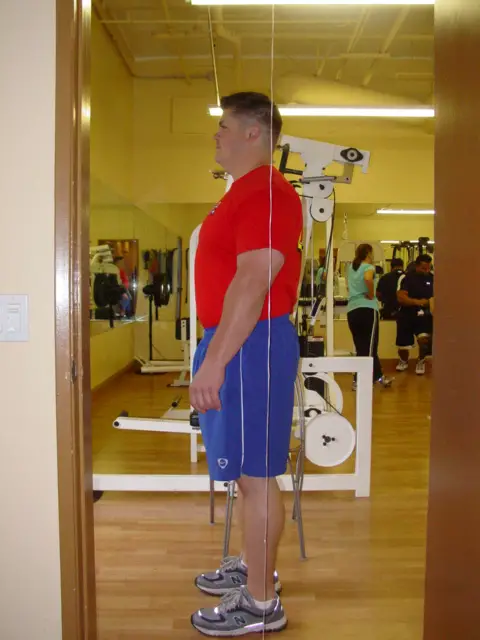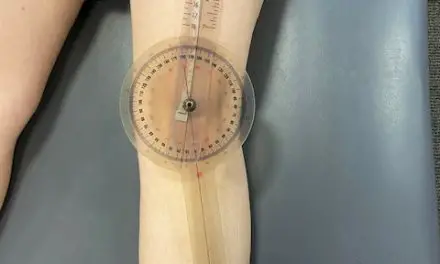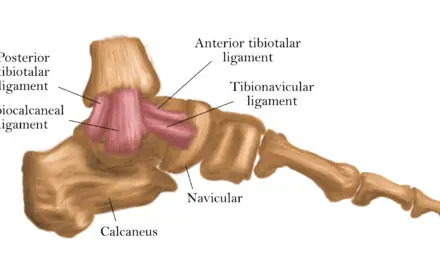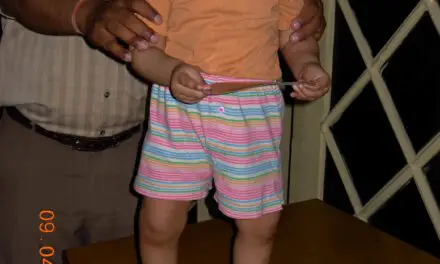What is anterior pelvic tilt?
The anterior pelvic tilt is where your pelvis is rotated forward, lifting your buttocks upward and increasing your lower back arch. Sometimes the pelvic tilt decreases the upper spine curvature, making your back to appear flatter.
As a result, some muscles get chronically shortened, like your hip flexors and lower back; and some get lengthened and inhibited, like your glutes. This can be caused by sitting too much, injury, pain, or a pathology.
Exercise in the form of stretching and strength training may help you reduce the pelvic tilt for some people as long as it doesn’t increase pain and actually helps you move better. But don’t expect quick-fix results. If it took you months or years to develop the anterior pelvic tilt, it may take just as long to change the position.
Exercises for anterior pelvic tilt
The idea behind exercises for the anterior pelvic tilt is to strengthen what muscles are weak and lengthen what muscles are shortened. You can do these pelvic tilt exercises at home with minimal space and equipment.
Kneeling hip flexor stretch
This stretch targets mostly your hip flexor muscles while strengthening your glutes. Use a towel, yoga mat, or similar object to cushion your knee if needed.
- Kneel on the floor on your right knee with your left leg bent in front of you at about 90 degrees.
- Shift your weight toward your left foot and tighten your right buttocks so that you should feel a stretch in your right hip flexors.
- Raise your right arm over your head to increase the stretch.
- Hold this position for about 3 to 4 deep breaths, lower your arm, and shift your weight toward your body’s midline.
- Repeat this exercise on the other side of your body.
Glute bridges, pelvic thrusts
This exercise strengthens your glutes
- Lie on your back with your feet and knees about as wide as your hips.
- Lift your buttocks off the floor, and hold this position for about two to three deep breaths.
- Lower your buttocks to the floor and repeat this for 8–10 reps.
- You may put a 1-foot long foam roller or rolled up bath towel between your knees to strengthen your adductors.
Deadlifts
Deadlifts target your glutes as well as strengthening your torso. It can also help you pick heavy objects off the ground.
- Stand with your feet about shoulder width apart with the barbell in front of you.
- Bend your knees slightly as you reach forward to grab with the barbell with your hands about shoulder width apart.
- Exhale as you push your hips forward as you straighten your torso. The exhalation automatically braces your abdominal muscles to stabilize your body as you lift.
- Tighten your glutes as you hold the standing position for one second before you lower the weight back to the ground.
- Bend your knees as you lower the weight.
If you’re new to this exercise, work with a qualified personal trainer for a few sessions before doing it on your own. You can also do this with kettlebells and dumbbells.
Single-leg exercises
Single-leg exercises not only strengthen your glutes, core, and lower body, but it can also help you work on the side that is weaker or less coordinated than the other.
For example, if your left leg and hip is stronger than your right side, work on your right side more by doing an extra set or a few more reps.
These exercises include:
- single leg squats
- front lunges
- side lunges
- crossover lunges
- single leg deadlifts
- single leg bridges
Single leg training offers many unique benefits compared to bilateral leg training and biomechanically single leg squats are very different. I recommend doing unilateral training to develop more balanced and functional leg musculature. The exercises are easy to modify to target different parts of the legs which is why they are great for fixing muscular imbalances in the hips and legs.Single leg exercises also require balance and stabilization and as a result there will be a great carryover to athletic movements. You can start by adding a couple of variations to your routines and progress from there.For more information, here is a comprehensive single leg squat video (6 best single leg squat exercises) ➞ youtu.be/7UJLJl3qUaU
Posted by VAHVA Fitness on Friday, April 7, 2017
But exercise isn’t a cure-all for anterior pelvic tilt. Sometimes if you’re chronically tight, there’s a possibility that your nervous and muscular systems have become so used to the shortened position that no amount of stretching can “lengthen” the muscle and nearby connective tissues.
For example, a review of 26 stretching studies found that long-term stretching for three to eight weeks do not seem to change muscle and tendon mechanical properties. Instead, the researchers found that it’s how people sense their muscle length has changed. In other words, stretching affects more on the nervous system in how people perceive the change.
Whether or not exercise can correct your pelvic tilt, if your goal is to move better and reduce pain, then almost any kind of exercise can do the job—as long as you enjoy doing it and do it consistently.
“When it comes to posture, some individuals are simply born with greater lumbar lordosis or curvature in their lower spine than others, but THIS DOES NOT MAKE ONE NOR THE OTHER GOOD OR BAD, regardless of pain!” ~ Dr. Hayley VanBeek
Does anterior pelvic tilt cause low back pain?
Most of the research since the 1980s do not support the common belief that the anterior pelvic tilt causes back pain.
First, having tight hip flexors doesn’t mean that they cause your low back pain, and neither are weak or inhibited hips muscles.
For example, a study of 600 young men in the Swedish military fails to find a positive relationship between psoas muscle tightness and back pain. The researcher Anna-Lisa Hellsing stated that having tight muscles is the result of “both positive and negative factors,” which include
- heavy muscular work or strength training
- chronic pain
- poor movement pattern
- genetic factors
In 2002, another study with 600 people—young and old—in Tehran, Iran, found no association between low back pain and various structural factors, such as pelvic tilt, foot arch, leg length discrepancy, lumbar lordosis, and the length of muscles (iliopsoas, abdominals).
Related: A Disc Bulge Does Not Always Correlate to Back Pain
In 2014, a systematic review and meta-analysis of 43 studies found no difference in lordosis angle, pelvic tilts in a standing position, and usage of the lumbar spine or hip flexors during a forward bend between people with low back pain and those without.
Another thing to consider is that pelvic tilts and the pelvic anatomy varies among each person. A 2010 study of 120 men and women with no pain found that 85% of the men and 75% of the women had an anterior pelvic tilt.
So if anterior pelvic tilt exists in people with or without back pain, then you should consider alternatives to what else may be causing your pain.
Finally, posture assessments are unreliable and poorly reproducible, according to a 2018 study. The angle of the pelvic tilts among those with or without back pain overlap. In other words, you can’t tell who has back pain or not by looking at a pelvic tilt alone.
“An irreproducible standing posture can lead to false radiological measurements, incorrect diagnoses and possibly unnecessary treatment,” the researchers wrote.
And since the body of research indicates that nearly all types of exercises can provide some degree of back pain relief, perhaps exercises for anterior pelvic tilt exercises could still offer benefits.
“Janda had some great theories and useful clinical processes. To think these syndromes are the beginning and end of his thought is crazy. Such a small part of the overall system and process he advocated.” ~ Dr. Jason Silvernail
Anterior pelvic tilt vs. posterior pelvic tilt
The posterior pelvic tilt is where your pelvis is rotated back, reducing your lower back arch and sometimes increasing your upper body hunch. This may cause tight glutes and hamstrings and lengthened hip flexors—a mirror image of the anterior pelvic tilt.
So is one better than the other? Probably not.
While there is less research on the posterior pelvic tilt and back pain than the anterior version, we can look at the evidence behind anterior tilt and other types of posture and find similar conclusions.
However, some researchers find that having a posterior tilt may reduce your lungs’ ability to expand since there is less chest cavity space. This may affect certain athletic performance, like long-distance running and powerlifting.
So is having anterior pelvic tilt bad?
As you can see from the research, having an anterior pelvic tilt isn’t a bad thing. It’s like comparing nose sizes to see if that is a cause of forward head and neck pain.
People can have back pain or hip pain whether they have a pelvic tilt or not, even those with good posture.
Remember that pain isn’t just about posture, a piece of anatomy, or a movement pattern; it’s also influenced by how we feel, what we think about pain and our body, and genetic factors.
A native of San Diego for nearly 40 years, Nick Ng is an editor of Massage & Fitness Magazine, an online publication for manual therapists and the public who want to explore the science behind touch, pain, and exercise, and how to apply that in their hands-on practice or daily lives.
An alumni from San Diego State University with a B.A. in Graphic Communications, Nick also completed his massage therapy training at International Professional School of Bodywork in San Diego in 2014.
When he is not writing or reading, you would likely find him weightlifting at the gym, salsa dancing, or exploring new areas to walk and eat around Southern California.






